Items
keywords is exactly
malaria
-
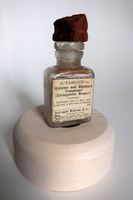
Livingstone
A small wooden chip from the same object collection as the medicine chest balanced on top of one of the bottles from the chest. "The treatment, the Livingstone rouser, was formulated by Dr Livingstone, who, after an attack of malaria in 1853, patented this mixture of quinine and purgatives (calomel, rhubarb and jalop) mixed with opium (Barrett & Giordani 2017: 1655–1666). The chip balanced on its lid is said to be from the almond tree under which he proposed to Mary Moffat in 1844. The juxtaposition of these two objects, one representing the quantifiable and the other the poetic, draws the viewer to consider the conflation of these two realms" (Liebenberg 2021: 273). -
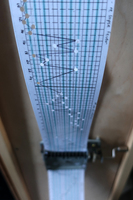
Listen Laennec
"In this work, the temperature graphs of individuals suffering from malaria, yellow fever, trypanosomiasis and tickborne-relapse fever – all viewed as ‘tropical’ and treatable by the contents of the medicine chest – were converted into a musical score. I punched the strips of paper of a hand-cranked musical box mechanism with holes that corresponded to the graphs – the vertical axis representing temperature variations and the horizontal axis representing the approximate number of days the fever is said to last. The translation of these graphs into notes seems nonsensical, as we do not listen for a temperature; we measure it by feeling a forehead or taking a reading with a thermometer. The practice of listening has, however, been part of the history of medicine since the days of Hippocrates (c.460–c.370 BC), when physicians performed auscultations of the lung and heart by placing their ear directly on the patient’s chest' (Liebenberg 2021: 265). -
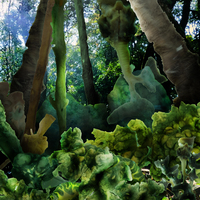
A 'Jungle'
"A ‘jungle’ consisted of a selection of pathological specimens from the Pathology Learning Centre that had been affected by typhoid fever, ascaris adult worms, yellow fever, amoebic ulcerations, tuberculosis and malaria. The diseases that afflicted these specimens were regarded as ‘tropical’. As described in Chapter One, BWC used the jungle as a significant terrain that called for a medicine chest to combat pathogens: ‘Whether you were valiantly saving your compatriot in war, traversing a dark African jungle, navigating one of the world’s first flying machines, exploring the most desolate place on earth, ascending the highest mountain in the world, or simply enjoying the windswept British coast, the chest would be there, ready for any ailment’ (Johnson 2008b: 255). BWC promoted their chests as the ideal antidote for a tropical landscape ‘at once full of potential wealth for imperial Britain, but simultaneously rife with disease’ (Johnson 2008b: 258) and claimed that the tropical colonies were ‘by far the most dangerous regions for travellers’ (BWC 1934: 8). It was here that ‘desolating ailments’ were encountered, all ‘particularly fatal to the so-called white man who originates in temperate climates’ (BWC 1934: 8). I adapted the colour of the images of afflicted intestines, livers, stomachs and brains and used them as material to construct a dense jungle that referenced this aspect of the medicine chest’s history. Printed on separate glass sections that fit into the cabinet at spaced intervals to create an illusion of depth and three-dimensionality, the work draws on the cross-sectional display technique used in many anatomy museums worldwide, in projects such as the Visible Human Project (1995) and that the artist Damien Hirst references in his works . Creating a visual link between the UCT specimens and the history of these diseases surfaces the occluded racial undertones of these understandings" (Liebenberg 2021: 267). -

Hosts and Carriers
A selection of glass slides of the insects, ticks and worms that are the primary or intermediate hosts or carriers of human diseases. These slides also featured in the 'Curiosity CLXXV' and 'Subtle thresholds' exhibitions, sourced from the Pathology Learning Centre (PLC), where they were originally donated by the secretary of the Department of Microbiology. Dr Yeats identified them as glass photomicrographs and speculated that they were probably made for a special projector used for teaching many years ago. -
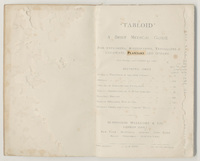
Philosophia Botanica
"'Tabloid' Medicine Chests and Cases and 'Tabloid' First Aid Outfits have become standard equipment for travellers. They have accompanied the pioneers of tropical exploration through the jungles of Equatorial Africa, Asia and South America, as well as travellers to the unknown parts of the temperate zones" (BWC 1934: 12). -

Philosophia Botanica
"'Tabloid' Medicine Chests and Cases and 'Tabloid' First Aid Outfits have become standard equipment for travellers. They have accompanied the pioneers of tropical exploration through the jungles of Equatorial Africa, Asia and South America, as well as travellers to the unknown parts of the temperate zones" (BWC 1934: 12). -
Quinine and Rhubarb Compound (Livingstone Rouser)
"Cathartic, tonic and anti-malarial. One to three may be taken with a little water, when an attack of malarial fever threatens, and repeated in two hours if necessary. Especially adapted for use as a purgative in the Tropics" (BWC 1925:136). The treatment, the Livingstone Rouser, was formulated by Dr Livingstone who, after an attack of malaria in 1853, patented this mixture of quinine and purgatives (calomel, rhubarb and jalop) mixed with opium. -
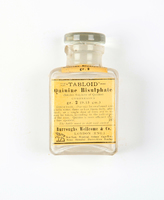
Quinine Bisulphate
"Anti-malarial, tonic. In malarial fevers, one or two should be taken every two hours. In ague, one to four should be taken, followed by a glass of water, and repeated in three hours if necessary" (BWC 1925:137). -

Iron and Arsenic Compound
"Tonic. Use with caution. One to two may be taken with a draught of water, three times daily, as a tonic during convalescence from malarial fevers, or as an alternative in skin affections" (BWC 1925:129)


